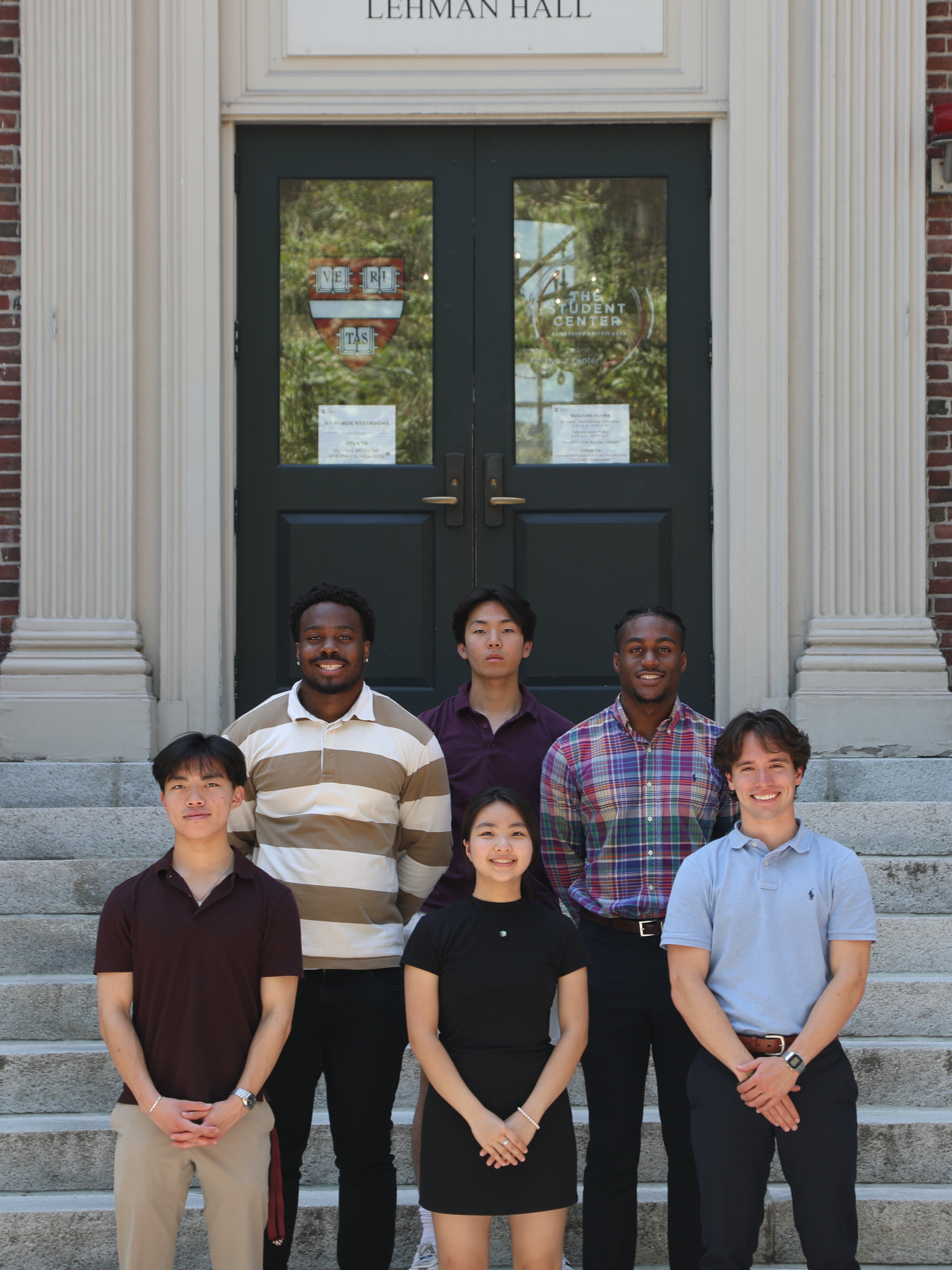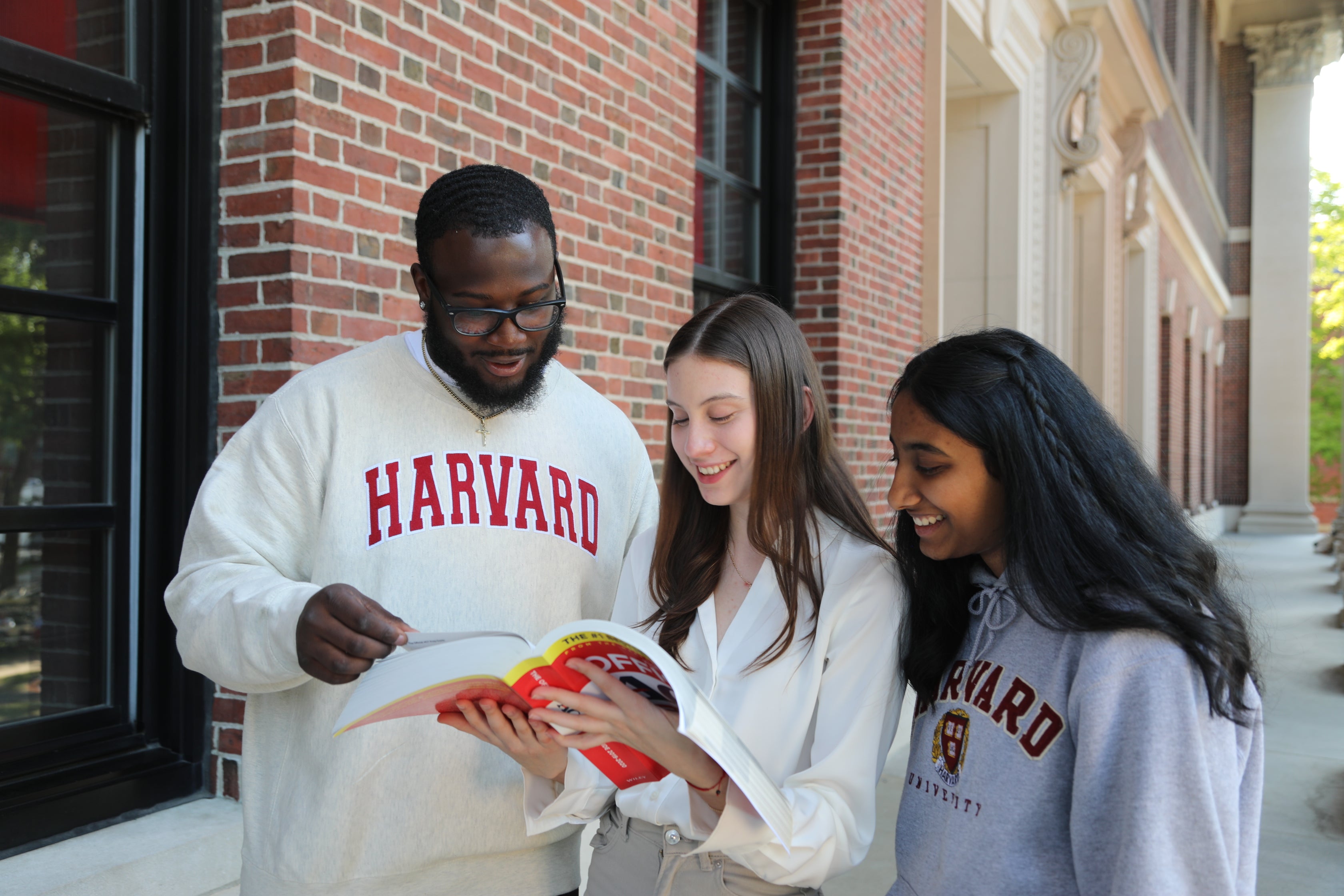By: Kalina
Abstract
This paper looks at how Artificial Intelligence (AI) and biomimicry can help design energy-efficient homes. By using AI-powered design and ideas inspired by nature, like termite mounds for cooling and lotus leaves for cleaning, architects can create homes that use less energy and are more sustainable. AI can help by analyzing environmental data to make buildings more efficient, while biomimicry offers natural solutions for controlling temperature and improving ventilation.
The paper shares examples from countries like Australia, Japan, and the U.S. showing how these technologies are helping cities fight climate change and energy problems. Even though there are challenges, like high costs and rules that limit progress, the paper suggests ways that policymakers and city planners can support these technologies for buildings that are easier to make and better for the environment. In the end, AI and biomimicry offer a modern way to build homes that work with nature, making a more sustainable future.
Imagine living in a home that not only adjusts its temperature to your comfort but also uses natural sunlight to brighten your rooms and cut down on energy usage—all powered by cutting-edge technology. Welcome to the exciting world of AI-driven generative design and biomimicry in architecture. These innovative approaches are revolutionizing how we build homes that are not only smart but also environmentally friendly. By combining artificial intelligence (AI) with nature-inspired designs, we are shaping a future where sustainable living is accessible to everyone. In this paper, we will explore how AI and biomimicry are transforming the way we design energy-efficient homes, with a focus on how these technologies can adapt to diverse countries like Australia, Japan, and the United States.
Literature Review
AI and biomimicry are transforming sustainable building design. AI optimizes building shapes and energy efficiency (Jones et al., 2020) and enables the creation of sustainable materials through 3D printing (Kumar, 2021). Biomimicry, drawing from nature’s designs, enhances energy-saving strategies, such as the Eastgate Centre's natural ventilation, inspired by termite mounds (Biomimicry in Architecture, 2023), and the Supertrees' water collection systems (Basharat, 2024).
Combining AI with biomimicry can create adaptable, energy-efficient buildings. For example, AI can simulate wind flow to optimize ventilation, while biomimicry contributes to temperature-regulating designs (Althaf, 2023). Challenges like high costs and regulations remain, but supportive policies could accelerate adoption (Taylor, 2022). Together, AI and biomimicry offer promising solutions for energy-efficient, nature-integrated buildings.
What is AI-Driven Generative Design?
Generative design is an iterative design process that allows the architect to explore a range of design solutions that meet a set of constraints. AI-driven generative design allows for artificial intelligence to help with the generation of those designs. For example, architects can experiment with innovative materials and structures inspired by nature. This is where biomimicry comes in, studying how animals, plants, and ecosystems solve problems to create smarter buildings. For example, architects might design walls that mimic termite mounds, which naturally regulate temperature without air conditioning, or roofs inspired by lotus leaves that repel water and dirt. AI can analyze these natural patterns and suggest ways to incorporate them into urban housing, making homes more energy-efficient and sustainable.
By combining AI and biomimicry, cities can have smarter, greener buildings that adapt to their surroundings while reducing environmental impact. AI can also help design homes that adjust to different weather conditions, improving insulation in winter and ventilation in summer. This approach is especially useful in places with extreme climates, where traditional buildings struggle with energy efficiency. As technology advances, AI-driven biomimicry could reshape how cities look and function, creating urban spaces that are not only beautiful but also environmentally friendly and highly efficient.
How Biomimicry Shapes Architecture
Biomimicry in architecture uses nature’s designs to create buildings that are more sustainable, energy-efficient, and adaptable to their environments. Nature has perfected solutions
for extreme temperatures, harsh weather, and resource scarcity over millions of years, and architects are now learning from these to reduce environmental impact.
For example, The Supertrees, Cooled Conservatories, and water features mimic natural processes like collecting rainwater, generating energy, and controlling temperature to help the environment. Seashells provide ideas for strong, lightweight materials, and cacti’s water storage has led to better rainwater collection in dry areas. Biomimicry also helps improve durability, like lotus leaves inspiring self-cleaning materials and spider silk influencing flexible, strong building materials.
In Australia, the design of the Eastgate Centre in Melbourne takes inspiration from the structure of a kangaroo’s burrow, using natural ventilation and thermal mass to regulate indoor temperatures without relying heavily on air conditioning. This helps reduce energy consumption and creates a more sustainable, energy-efficient building.
By merging nature’s wisdom with modern technology, biomimicry is shaping the future of architecture and will be crucial for designing more efficient, resilient, and eco-friendly buildings.
Why Energy-Efficient Housing is Crucial for Urban Areas
Energy-efficient housing is especially important in urban areas where electricity and heating usage are high. The rising cost of energy and the urgent need to reduce our carbon footprint make energy-efficient homes an essential part of future urban planning. By reducing the amount of energy used for heating, cooling, and lighting, energy-efficient homes not only lower utility bills but also help combat climate change by producing fewer greenhouse gases. With
urban populations expanding, sustainable housing solutions are more crucial than ever. Australia, for instance, has a growing demand for energy-efficient housing that can adapt to extreme weather conditions, such as heat waves and bushfires, making it an ideal case study for the implementation of AI and biomimicry in architecture.
In the United States, cities like New York are also grappling with energy consumption in dense urban environments. In such places, AI-driven designs could be utilized to optimize energy use in multi-story buildings while factoring in challenges such as cold winters and high pollution levels. AI could design efficient insulation, window placements, and even renewable energy solutions like solar panels based on a building's unique surroundings.
Combining AI and Biomimicry for Sustainable Design
When AI and biomimicry come together, the results are extraordinary. AI analyzes vast amounts of data, simulating how designs will perform in different environmental conditions. Meanwhile, biomimicry offers nature-inspired solutions to common building problems. For example, AI might simulate how wind flows through a building to optimize airflow and reduce the need for air conditioning. Architects can use these insights to design homes that mimic how leaves channel wind or how animal skins maintain internal temperatures. This combination creates buildings that are not only energy-efficient but also unique and innovative, offering the potential for a sustainable future.
For instance, in Japan, where the country frequently experiences earthquakes, AI and biomimicry could be used together to create flexible building designs inspired by the natural
swaying of trees during storms. This could help reduce structural damage during seismic events while maintaining energy efficiency.
Real-World Examples of AI and Biomimicry in Action
Several extraordinary homes demonstrate how AI and biomimicry work together to create energy-efficient, sustainable living spaces. One example is a building with honeycomb-like walls, which are lightweight yet strong, offering structural stability while reducing material usage. Another example is a home with smart windows that automatically adjust to block excess heat, much like how certain plants respond to sunlight by closing their leaves to conserve energy.
In Japan, AI and biomimicry combine to create homes inspired by the lotus flower’s ability to shed water, with self-cleaning surfaces that reduce maintenance and conserve water by mimicking the plant's natural design.
In the Netherlands, architects have designed homes using AI to replicate the insulating qualities of owl feathers, which trap air to regulate temperature, resulting in energy-efficient homes that stay warm in winter and cool in summer.
In Australia, AI-driven designs are helping to create homes inspired by the burrows of animals like the bandicoot, incorporating natural ventilation systems that provide consistent airflow without relying on mechanical cooling or heating.
In the UK, AI has been used to design homes with walls modelled after the structure of coral reefs, which allow for natural airflow and temperature regulation while reducing energy consumption.
In the Middle East, AI-powered designs mimic the way camels’ thick coats help regulate temperature in extreme heat, creating homes with natural cooling systems that keep interiors comfortable without heavy use of air conditioning.
These types of designs show how technology and nature-inspired principles can work hand in hand to create functional, beautiful, and energy-efficient homes.
How Homes Designed with AI and Biomimicry Save Energy
Homes built using AI and biomimicry save energy in various ways. Smart windows reduce the need for air conditioning by adjusting to outdoor temperatures, while optimized airflow designs minimize the use of fans and air conditioners. Natural sunlight is harnessed for lighting, reducing the need for artificial lighting and lowering electricity consumption. These features, when combined, lead to significant reductions in energy use, providing both homeowners and the planet with long-term benefits. In Australia, where energy costs are rising, such innovations offer a sustainable and cost-effective solution to growing energy demands. Likewise, in Japan, where energy efficiency is critical due to the country’s limited resources and high population density, these designs can help mitigate the effects of climate change while providing residents with more comfortable living spaces.
Challenges to the Widespread Adoption of AI and Biomimicry
Despite the clear benefits of AI and biomimicry in architecture, there are several challenges to their widespread adoption. One major obstacle is the high cost of implementing these technologies, which can make them out of reach for many builders and homeowners. The complexity of AI algorithms and the need for specialized expertise further complicate implementation. Additionally, there are often regulatory hurdles, such as outdated building codes that do not accommodate new, sustainable technologies. In countries like Australia and Japan, these barriers can slow the adoption of energy-efficient building practices, but with the right support, these challenges can be overcome. Furthermore, public awareness and education about the benefits of these technologies can help accelerate adoption.
The Importance of Nature-Inspired Materials in Energy-Efficient Designs
Materials inspired by nature play a crucial role in the development of energy-efficient buildings. Lightweight yet strong materials help reduce the energy required for construction and ongoing maintenance. Some materials excel at insulating buildings, keeping heat inside during cold weather and preventing it from entering during hot weather. These materials are key to achieving the energy savings that make sustainable buildings viable. In Australia, where temperatures can vary widely, using such materials could lead to significant reductions in energy usage for heating and cooling, making them a valuable asset for architects and homeowners alike. Japan’s extreme weather conditions also make these materials especially useful, as they
can help homes regulate temperature naturally, without relying heavily on energy-consuming systems.
How Cities Can Encourage the Adoption of Sustainable Designs
Cities can support the growth of sustainable homes by enacting policies and offering incentives for the use of green building materials. For example, offering tax breaks for builders who incorporate energy-efficient features or hosting design competitions can encourage innovation in the field of sustainable architecture. Urban planning that prioritizes energy-efficient buildings can make it easier for architects and developers to integrate AI and biomimicry into their projects. In Australia, cities like Melbourne and Sydney have already begun implementing policies that promote sustainability, paving the way for more widespread adoption of these technologies. In Japan, the government has also shown interest in sustainable building practices, providing financial incentives for green designs to help tackle the challenges posed by natural disasters and limited space.
The Future of AI and Biomimicry in Architecture
The future of AI and biomimicry in architecture is filled with exciting possibilities. Advances in 3D printing and smart materials will make it easier to create even more innovative and sustainable designs. AI will become more sophisticated, enabling architects to push the boundaries of what’s possible in terms of energy efficiency and creativity. As these technologies continue to evolve, they will lead to the development of affordable, energy-efficient homes that can be tailored to various environments. The potential for transforming the way we live is
immense, and with continued research and support, AI and biomimicry could revolutionize the architecture of the future.
Conclusion
In conclusion, combining AI and biomimicry offers a changing approach to designing homes that are both energy-efficient and good for the environment. By using ideas from nature, like termite mounds for natural cooling or lotus leaves for self-cleaning surfaces, architects can create buildings that are smarter and better suited to their surroundings. AI helps by improving designs to save energy, while biomimicry provides materials and systems inspired by nature that reduce the need for energy-guzzling technologies. As these technologies keep advancing, they offer a way to build homes that use less energy and work with nature. Finally, AI and biomimicry are transforming the way we design energy-efficient homes, with a focus on how these technologies can adapt to diverse countries. As we look to the future, we can create a world where our homes coexist with nature and contribute to its preservation.
Works Cited
Althaf, Zeba. “Architecture Trends: AI-Powered Generative Design and Rendering.” RTF | Rethinking the Future, 14 Dec. 2023,
www.re-thinkingthefuture.com/sustainable-architecture/a11650-architecture-trends-ai-po wered-generative-design-and-rendering/.
Basharat, Mona. “This Sustainable Home in Brazil Blends into Nature.” Architectural Digest, Architectural Digest, 25 Aug. 2024,
www.architecturaldigest.com/gallery/this-sustainable-home-in-brazil-feels-like-a-well-ke pt-secret.
“Biomimicry in Architecture: 10 Nature-Inspired Examples.” The Overview, 5 Mar. 2023, www.theoverview.art/biomimicry-in-architecture-examples/.
“Biomimicry in Architecture: Learning from Nature to Enhance Biodiversity.” Learn at Constructive Voices, 26 Mar. 2024,
learn.constructive-voices.com/biomimicry-in-architecture-learning-from-nature-to-enhan ce-biodiversity/.
“Biomimicry: Nature-Inspired Sustainable Design Solutions | Perch Energy.” Www.perchenergy.com,
www.perchenergy.com/blog/innovation/biomimicry-sustainable-design-solutions. Chow, Andrew R. “How AI Is Making Buildings More Energy-Efficient.” TIME, Time, 11 Dec. 2024, time.com/7201501/ai-buildings-energy-efficiency/.
Farzaneh, Hooman, et al. “Artificial Intelligence Evolution in Smart Buildings for Energy Efficiency.” Applied Sciences, vol. 11, no. 2, 14 Jan. 2021, p. 763. MDPI, www.mdpi.com/2076-3417/11/2/763, https://doi.org/10.3390/app11020763.
filipeboni. “Biomimicry for Sustainable Design: A Game-Changer for Architects, Interior Designers, and Construction Companies.” UGREEN, 20 Mar. 2023,
ugreen.io/biomimicry-for-sustainable-design-a-game-changer-for-architects-interior-desig ners-and-construction-companies/.
Heathcote, Edwin. “Organic Architecture Has Never Seemed so Relevant.” @FinancialTimes, Financial Times, 13 Oct. 2024,
www.ft.com/content/13dbec76-04b5-4464-b61c-54504e4be842.
Imani, Negin, and Brenda Vale. Biomimetic Buildings Copying Nature for Energy Efficiency. 29 Nov. 2022,
www.researchgate.net/publication/365819986_Biomimetic_Buildings_Copying_Nature_f or_Energy_Efficiency.
james_admin. “Artificial Intelligence and the Future for Smart Homes.” EDGE Buildings, 30 Jan. 2020, edgebuildings.com/artificial-intelligence-and-the-future-for-smart-homes/. “Medium.” Medium, 2025,
ernesto-87727.medium.com/biomimetic-architecture-landscaping-and-urbanism-c79e0cb 143b. Accessed 2 Feb. 2025.
Nikitha Sunil. “Nature-Inspired Resilience: Biomimicry in Generative Design.” PA | Architecture & Technology, 13 Nov. 2024,
parametric-architecture.com/biomimicry-in-generative-design/?srsltid=AfmBOoqxr0c5P EsiXpF3_42dTWCTRecQn7j7rTrpBMhVebgFYRF0mHgk&. Accessed 2 Feb. 2025.
Ollie. “Nature’s Blueprint: How Biomimicry Is Shaping Sustainable Design.” Medium, 31 Aug. 2024,
medium.com/%40ohermans1/natures-blueprint-how-biomimicry-is-shaping-sustainable-d esign-52bd1ff08fa3. Accessed 2 Feb. 2025.
Phattranis Suphavarophas, et al. “A Systematic Review of Applications of Generative Design Methods for Energy Efficiency in Buildings.” Buildings, vol. 14, no. 5, 7 May 2024, pp. 1311–1311, https://doi.org/10.3390/buildings14051311. Accessed 31 May 2024.
Scholarworks@uark, Scholarworks@uark, and Virginia Hammond. Utilizing Biomimicry to Design Sustainable Architecture Utilizing Biomimicry to Design Sustainable Architecture. 2024.
“The Role of AI in Sustainable Architecture: How Generative Design Is Helping to Reduce Carbon Footprints | Maket.” Www.maket.ai,
www.maket.ai/post/the-role-of-ai-in-sustainable-architecture-how-generative-design-is-h elping-to-reduce-carbon-footprints.
Varshabi, Niloufar, et al. “Biomimicry for Energy-Efficient Building Design: A Bibliometric Analysis.” Biomimetics, vol. 7, no. 1, 24 Jan. 2022, p. 21,
https://doi.org/10.3390/biomimetics7010021.
Wikipedia Contributors. “Generative Design.” Wikipedia, Wikimedia Foundation, 4 Dec. 2019, en.wikipedia.org/wiki/Generative_Design.





